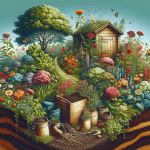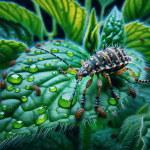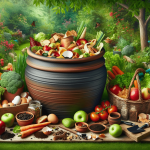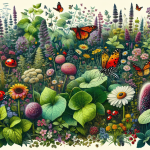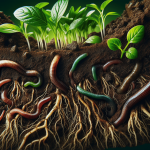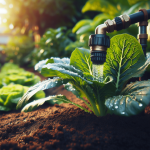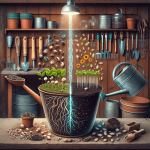This post may contain affiliate links. As an Amazon Associate, we may earn commissions from qualifying purchases.
Have you ever wondered what it would be like to combine the best of both worlds from aquaponics and traditional gardening? As someone who enjoys the soothing greens of the garden and thoughtful conversations with pet fish at times, you might find the idea intriguing. Imagine the harmony of fish and plants helping one another to flourish, all while you sit back, admire, and maybe sip on some lemonade.
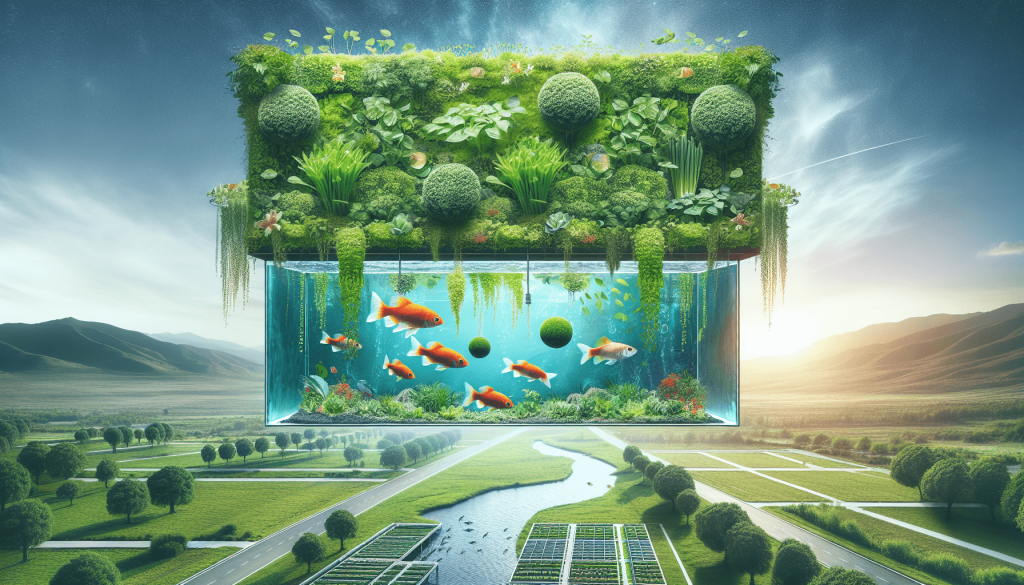
Understanding Aquaponics and Traditional Gardening
Before we leap into the wonderful benefits of merging these two methods, let’s first understand what each entails. Think of this as meeting the intriguing protagonists of your favorite novel.
What Is Aquaponics?
Aquaponics is like a symphony, where fish and plants create music together. It’s an integrated system combining aquaculture (raising fish) and hydroponics (cultivating plants in water). Here, fish produce waste, which is converted by beneficial bacteria into nutrients that plants can thrive on. In return, plants help purify the water, creating a pristine environment for the fish. It’s an elegantly balanced relationship that finds its inspiration in nature.
Exploring Traditional Gardening
Traditional gardening, on the other hand, is like an old friend whose stories you know by heart. It’s planting seeds in soil, watering them, and waiting for them to blossom while feeling the sun warm your back. This method taps into soil’s natural nutrients and is beloved for its direct connection to the Earth. The feel of loamy soil beneath your fingers and the intoxicating scent of fresh blooms have a certain charm that’s hard to resist.
The Interplay of Aquaponics and Traditional Gardening
Imagine traditional gardening and aquaponics coming together like a well-crafted duet. The idea isn’t to pit one against the other, but to create a complementary system that maximizes the strengths and reduces the drawbacks of both methods.
Enhancing Ecosystem Diversity
Integrating aquaponics with traditional gardening heightens ecosystem diversity. In this collaboration, not only do plants and fish thrive, but beneficial bacteria, worms, and insects also find cozy homes. It helps create a richer, healthier environment where each component supports the next.
Resource Efficiency
Picture reducing your water bill while keeping your plants and fish healthy. Aquaponics naturally circulates water, cutting down on wastage. When mixed with the water needs of traditional gardens, the result is a more efficient use of water, creating an eco-friendly system.
Nutrient Optimization
Ever wished for a more nutrient-rich soil that doesn’t demand constant attention and additional fertilizers? Combining aquaponics with traditional gardening can do just that. Fish waste provides natural fertilizers for plants, which in turn nourish your soil. This results in plants that are healthier and have all the nutrients they need, naturally.
Practical Benefits of Integration
While the theoretical benefits sound delightful, let’s delve deeper into some concrete, practical advantages of this mix.
Improved Plant Growth
Plants thrive when they have access to a consistent, nutrient-rich water supply. Aquaponic systems are like having nature’s IV drip for your plants, providing them with just the right amount of nutrients they need to grow stronger and faster when combined with traditional gardening efforts.
Increased Yield
Imagine biting into a tomato that’s sweeter and juicier than what you’ve had before. With the added nutrients and health benefits provided by aquaponic systems, your produce won’t just match traditional yields—they’ll surpass them. It’s like watching your favorite team not only win the league but also score the highest points in history.
Year-Round Gardening
For garden lovers who feel a pang of remorse as winter draws closer, integrating aquaponics allows for continuous growth. By setting up indoors, you can enjoy fresh veggies throughout the year, unaffected by frost and chill.
Environmental Impact
Beyond the personal joys of gardening lies a greater responsibility to our environment. Isn’t there a special satisfaction in knowing your gardening habits are helping the planet?
Reducing Water Waste
Traditional gardens can be a tad thirsty. By implementing aquaponics, you reduce water usage significantly as the water is recycled through the system. It’s like a recycling program for water, making every drop count.
| Comparison | Traditional Gardening | Aquaponics Integrated |
|---|---|---|
| Water Usage | High | Low |
Lowering Carbon Footprint
Less water usage and healthier plant growth can lead to a reduced carbon footprint. By cultivating vegetables at home with minimal chemical inputs, you’re effectively cutting down on transportation and pesticide-related emissions.
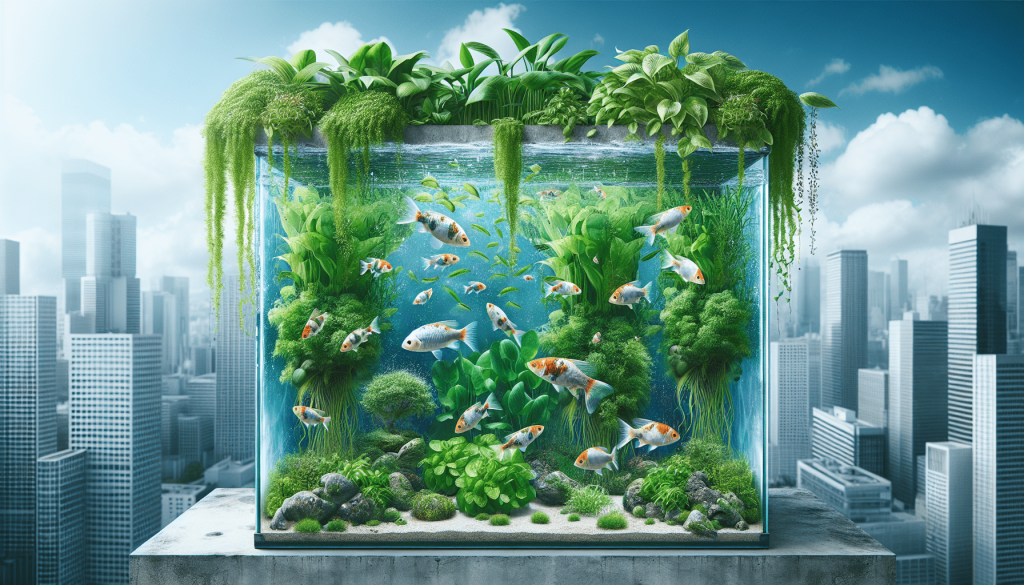
Personal Growth and Learning Experiences
Integrating aquaponics with traditional gardening isn’t just about plants and fish; it’s a journey that offers personal growth and education in sustainable practices.
Community Involvement
Sharing this innovative approach with friends and neighbors can foster a sense of community. You might find yourself discussing not just the weather but worm compositions and water pH levels, sparking connections with those around you.
Broadening Skill Sets
Even if you’re not a seasoned gardener, dipping your toes into aquaponics can enrich your knowledge and diversify your skills. It’s like learning a new language, where the words are made of water cycles and biological balances.
Overcoming Challenges
It would be remiss not to mention that blending aquaponics with traditional gardening does come with its set of challenges. However, like solving a puzzle, there’s a satisfaction that comes with overcoming each.
Initial Setup Complexity
The initial setup can be a bit technical for those new to aquaponics. Nevertheless, with a little persistence, you can create a system that suits your space and needs. There’s a distinct pride that comes with peering at a fully functioning aquaponics system knowing you had a hand in its creation.
Maintenance Learning Curve
Embracing this integration does require regular maintenance, such as monitoring fish health and keeping an eye on water quality. However, this process allows you to become a better gardener and aquaponist, learning from every little victory and mistake alike.
The Resilience of Integrated Systems
In merging two distinct methods, you create a system that’s more resilient and adaptable to various challenges.
Pests and Diseases
Although no garden is entirely immune, combining aquaponics and traditional gardening can lower the risks of pests and diseases. Ducks in the pond or chickens pecking around your garden can act as natural pest control, potentially reducing the need for chemical treatments.
Adapting to Climate Change
Climate uncertainties may pose threats to traditional gardening. Through integration, you can mitigate some of these effects by creating semi-contained environments less reliant on external weather conditions. It’s almost like giving Mother Nature a nudge to perform at her best.
The Journey Continues
Embracing integrated gardening is akin to starting a new chapter in a book that shifts genres halfway through. It may be challenging, but it’s also exciting, filled with moments of pure delight and wonder. You find yourself on a path that’s not just about growing food but nurturing ecosystems and communities. So, as you journey into this beautiful convergence of aquaponics and traditional gardening, there’s a whole world to discover, filled with growth, connection, and a better understanding of the symphony that is nature.

